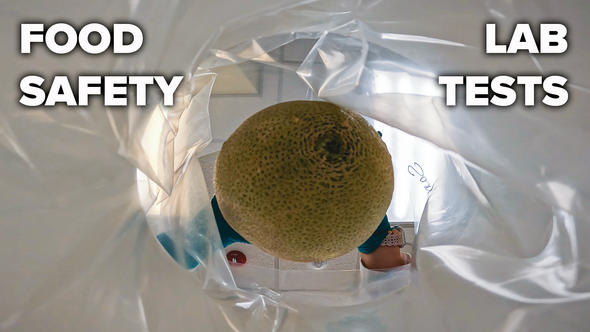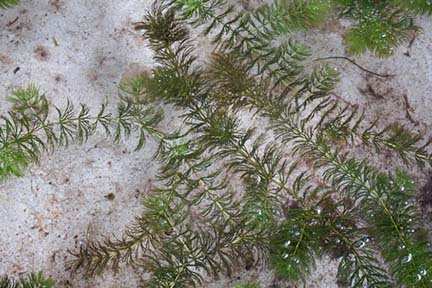
First Michigan detection of invasive hydrilla triggers response
News Release
| Oct. 2, 2023 Contact: Bill Keiper, 517-342-4087, or Joanne Foreman, 517-284-5814 First Michigan detection of invasive hydrilla triggers responseAquatic plant found in two West Michigan pondsHydrilla, considered one of the world’s most invasive aquatic plants, has been detected for the first time in Michigan. The Department of Environment, Great Lakes and Energy confirmed two small populations of the plant in adjacent private ponds on residential properties in Berrien Springs in Southwest Michigan.
“It’s not clear how either plant made its way to this pond, but seeds or fragments of the invasive plants may have been attached to ornamental plants installed in past years,” said Bill Keiper, EGLE aquatic biologist. “Sediment core samples of the pond and genetic analysis of the plant material are planned to help determine how long the hydrilla has been here and where in the U.S. it might have originated.” EGLE’s immediate response actions include surveying connected ponds, a receiving stream, and the St. Joseph River to ensure the full hydrilla population extent is known. Herbicide treatments are underway in the infested ponds, targeting hydrilla plants to prevent further tuber production this season. A response plan will focus on preventing the spread of hydrilla beyond its current location, with the long-term goal of eradication. Why be concerned?
You can helpEarly detection of hydrilla provides a better opportunity for successful control and eradication. Michigan’s Invasive Species Program relies on reports from the public to help in early detection and response efforts. Identify hydrilla
Report suspected hydrillaAny suspicious aquatic plants should be reported as soon as possible to EGLE-WRD-AIP@Michigan.gov. Include close-up photos and provide the location of the detection in your report. More information on identifying and reporting invasive aquatic plants can be found at Michigan.gov/Invasives. Michigan’s Invasive Species Program is cooperatively implemented by the Michigan Departments of Agriculture and Rural Development; Environment, Great Lakes, and Energy; and Natural Resources.
/Note to editors: Accompanying photos are available below for download. Caption information follows. Hydrilla plants: Invasive hydrilla is considered one of the world’s most invasive aquatic plants. Photo courtesy of Leslie J. Mehrhoff, University of Connecticut, Bugwood.org. Hydrilla infestation: Hydrilla stems float at the water’s surface. Heavy infestations can block access to waterways. Photo courtesy of Leslie J. Mehrhoff, University of Connecticut, Bugwood.org. Hydrilla graphic: Hydrilla is characterized by serrated leaves, generally in whorls of five, surrounding long stems. Illustration by Bruce Kerr./
|
||||
   |


 The small patches of
The small patches of 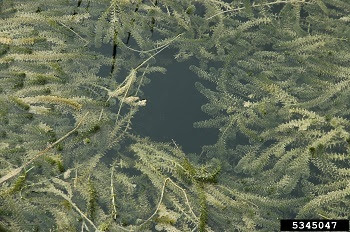 Hydrilla was introduced into Florida in the 1950s and has spread across the southeast. A separate strain was first detected in Delaware in 1976 and has since made its way through the Atlantic states and several Great Lakes states.
Hydrilla was introduced into Florida in the 1950s and has spread across the southeast. A separate strain was first detected in Delaware in 1976 and has since made its way through the Atlantic states and several Great Lakes states.
 Look for long, slender stems floating near the water surface. Check for these characteristics:
Look for long, slender stems floating near the water surface. Check for these characteristics:


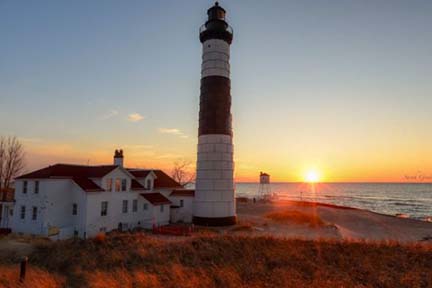


 Want to see more pictures like this, taken by Michigan state parks photo ambassador
Want to see more pictures like this, taken by Michigan state parks photo ambassador  Whether you want to learn about waterfowl hunting opportunities, enjoy excellent wildlife viewing or hear about the benefits of healthy wetlands, October is the perfect time to discover Michigan’s Wetland Wonders.
Whether you want to learn about waterfowl hunting opportunities, enjoy excellent wildlife viewing or hear about the benefits of healthy wetlands, October is the perfect time to discover Michigan’s Wetland Wonders.
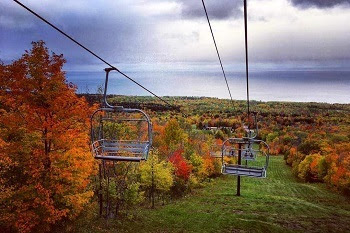 Michigan’s fall foliage is all the rage this time of the year, and we’re sharing a few different ways to experience that red, orange and gold brilliance!
Michigan’s fall foliage is all the rage this time of the year, and we’re sharing a few different ways to experience that red, orange and gold brilliance!
 Zip through fall foliage at 25 mph on the
Zip through fall foliage at 25 mph on the  Ash, elm and chestnut trees once were as common in cities as the streets that bear their names. Unfortunately, invasive species, disease and poor tree species selection have resulted in tree canopy that is much less diverse than it used to be. The good news is there’s plenty of guidance to help you make the right planting selections for your neighborhood or downtown space!
Ash, elm and chestnut trees once were as common in cities as the streets that bear their names. Unfortunately, invasive species, disease and poor tree species selection have resulted in tree canopy that is much less diverse than it used to be. The good news is there’s plenty of guidance to help you make the right planting selections for your neighborhood or downtown space!
 If your early October plans include time near Mackinaw City, add Fort Fright to your list of fun things to do with family and friends!
If your early October plans include time near Mackinaw City, add Fort Fright to your list of fun things to do with family and friends!






